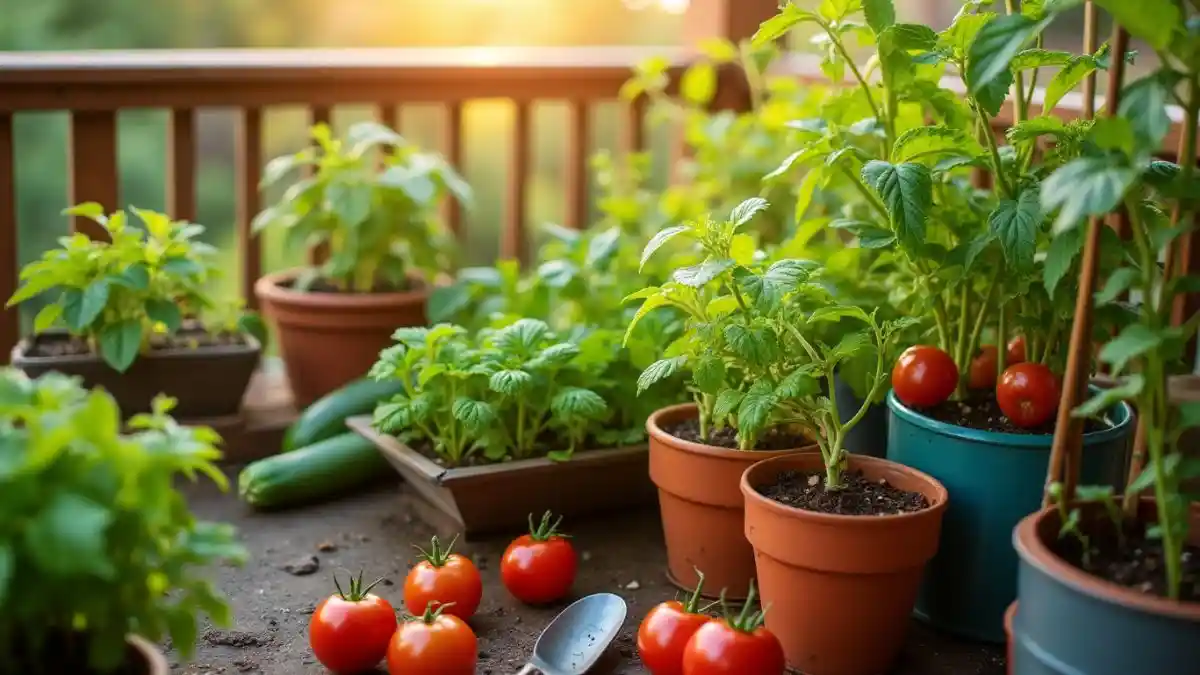Imagine stepping onto your balcony and plucking fresh tomatoes, herbs, or peppers for your meals—all grown by you. A balcony vegetable garden turns this dream into reality, even in the smallest urban spaces. If you’ve ever thought about growing your own food but felt limited by your apartment’s size, you’re not alone. Many people assume gardening requires a backyard, but with a little creativity, your balcony can become a thriving vegetable garden. In this article, we’ll walk you through 7 easy steps to start a balcony vegetable garden, perfect for beginners. Whether you have a sunny patio or a shaded nook, these tips will help you grow fresh, organic produce right outside your door.
Table of Contents
Why Start a Balcony Vegetable Garden?
Before diving into the steps, let’s explore why a balcony vegetable garden is worth your time and effort.
- Fresh, Organic Produce: Enjoy homegrown vegetables free from pesticides and chemicals.
- Space Efficiency: Even the smallest balcony can host a productive garden with the right setup.
- Cost Savings: Reduce your grocery bills by growing your own herbs, veggies, and fruits.
- Eco-Friendly: Lower your carbon footprint by reducing the distance your food travels.
- Mental Well-Being: Gardening is a therapeutic activity that reduces stress and boosts happiness.
For example, a 4×6 foot balcony can yield enough lettuce, herbs, and cherry tomatoes to supplement your meals. Plus, there’s nothing quite like the satisfaction of eating something you’ve grown yourself.
7 Easy Steps to Start Your Balcony Vegetable Garden
1. Assess Your Balcony Space
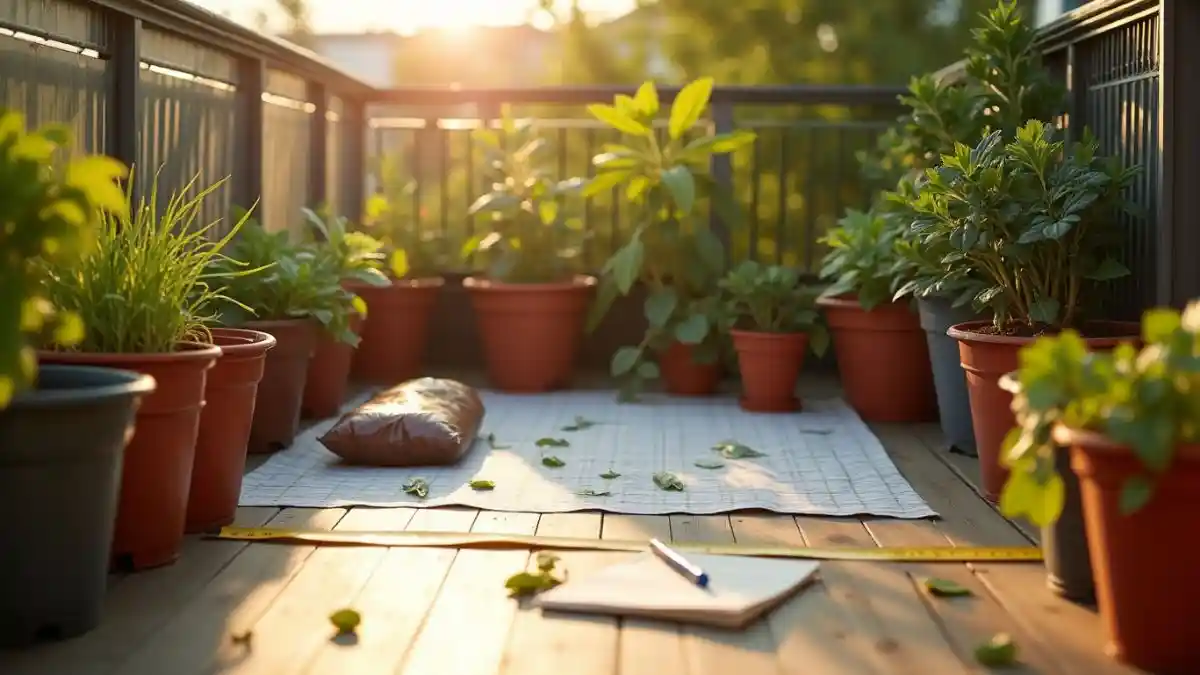
The first step in creating a balcony vegetable garden is understanding your space.
- Measure Your Balcony: Start by measuring the available floor space. Even a small balcony can host a productive garden if you plan carefully.
- Check Sunlight Exposure: Most vegetables need 4-6 hours of sunlight daily. Observe your balcony throughout the day to identify the sunniest spots. South-facing balconies are ideal, but east or west-facing ones can work too.
- Consider Weight Limits: Balconies have weight restrictions, so ensure your setup won’t overload the structure. Lightweight containers and soil mixes can help.
- Evaluate Wind Exposure: Windy balconies can dry out plants quickly. Use windbreaks like trellises, screens, or even tall plants to protect your garden.
Pro Tip: Use vertical space with hanging planters, wall-mounted pots, or trellises to maximize growing area. For example, a trellis can support climbing plants like beans or cucumbers, freeing up floor space for other veggies.
2. Choose the Right Containers
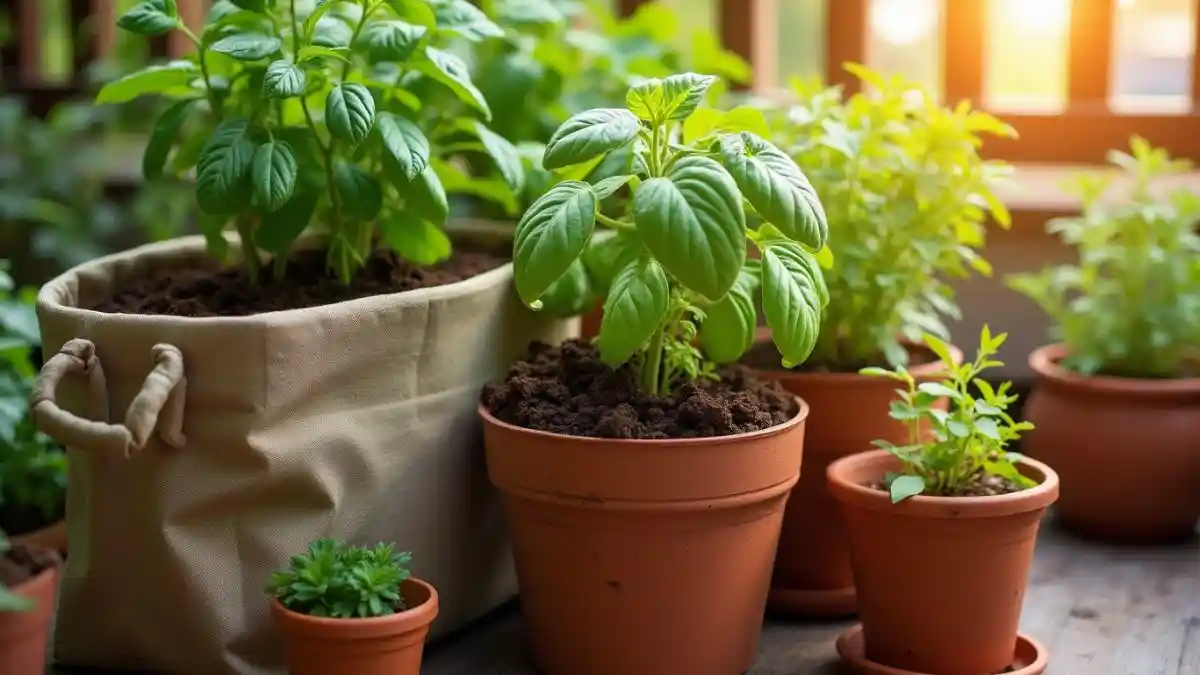
Containers are the foundation of your balcony vegetable garden.
- Drainage is Key: Ensure pots have drainage holes to prevent waterlogging, which can harm plant roots.
- Size Matters: Larger pots (5+ gallons) are ideal for tomatoes, peppers, and eggplants, while smaller pots (8-12 inches) work well for herbs and lettuce.
- Lightweight Options: Fabric pots or plastic planters are easy to move and ideal for balconies. Avoid heavy materials like ceramic if weight is a concern.
- Self-Watering Pots: These are great for busy gardeners, as they provide consistent moisture to plants.
Example: A 5-gallon container is perfect for growing cherry tomatoes, while a 12-inch pot can host a thriving basil plant.
3. Select Easy-to-Grow Vegetables
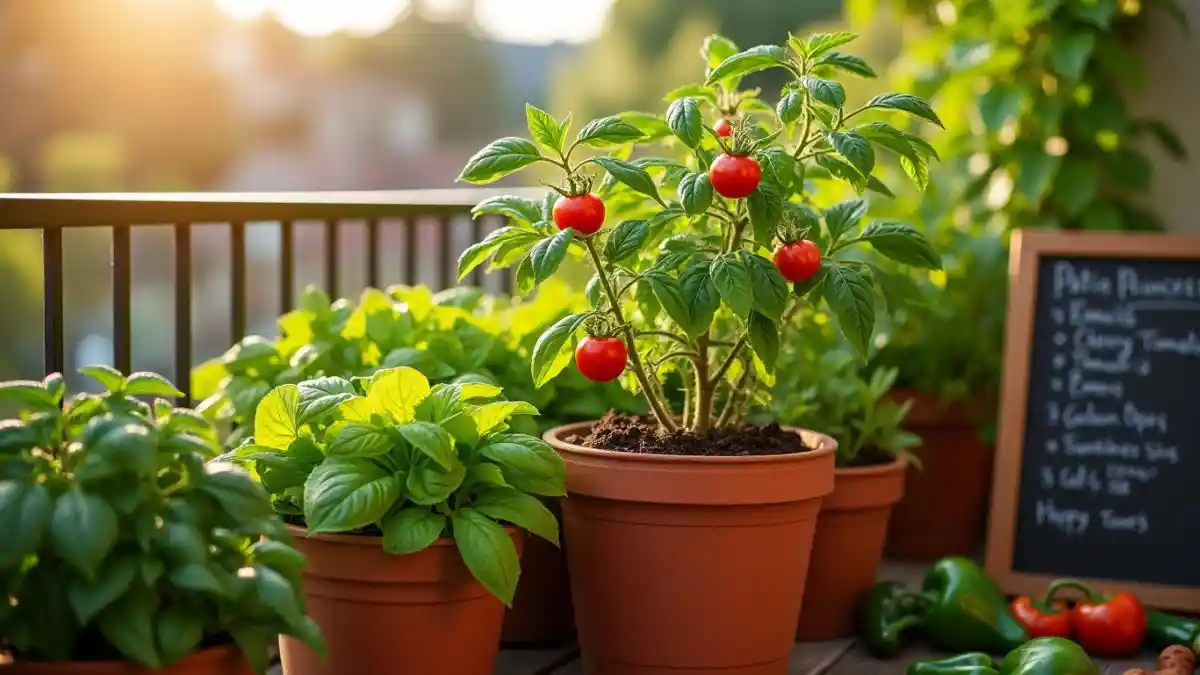
As a beginner, start with vegetables that are low-maintenance and productive.
- Beginner-Friendly Picks: Lettuce, herbs (basil, parsley, cilantro), cherry tomatoes, and peppers are great choices.
- Compact Varieties: Look for dwarf or bush varieties designed for small spaces. For example, ‘Patio Princess’ tomatoes or ‘Bush Champion’ cucumbers.
- Seasonal Choices: Grow cool-season crops like spinach and kale in spring and fall, and heat-loving plants like tomatoes and peppers in summer.
Pro Tip: Use a table to plan your garden. Here’s an example:
| Vegetable | Container Size | Sunlight Needs | Harvest Time |
| Cherry Tomatoes | 5-gallon pot | 6+ hours | 60-70 days |
| Basil | 12-inch pot | 4-6 hours | 30-40 days |
| Lettuce | 8-inch pot | 4-6 hours | 30-45 days |
| Peppers | 3-gallon pot | 6+ hours | 70-90 days |
4. Use Quality Soil and Fertilizer
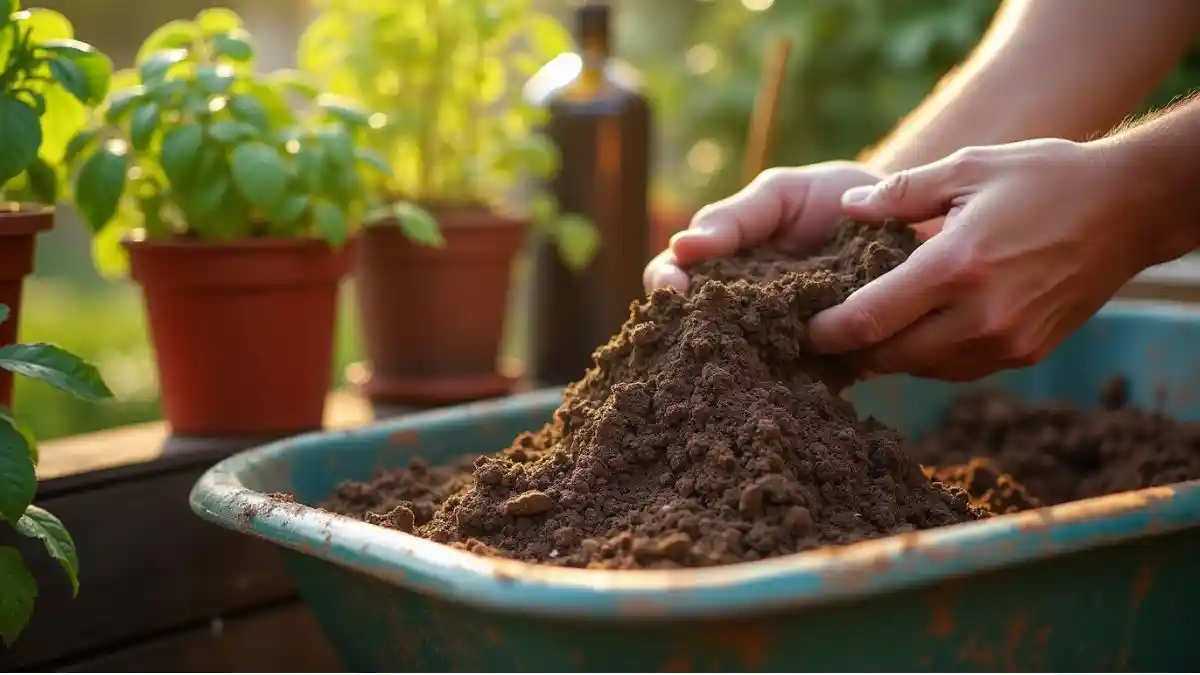
Healthy soil is the backbone of a successful balcony vegetable garden.
- Potting Mix: Use a well-draining mix enriched with compost. Avoid garden soil, as it can compact in containers and hinder root growth.
- Organic Fertilizer: Add slow-release granules or liquid fertilizer to provide essential nutrients. Compost tea or worm castings are excellent organic options.
- Soil Amendments: Mix in perlite or vermiculite to improve drainage and aeration.
Example: A blend of potting mix, compost, and perlite creates ideal growing conditions for most vegetables.
5. Plan Your Watering System
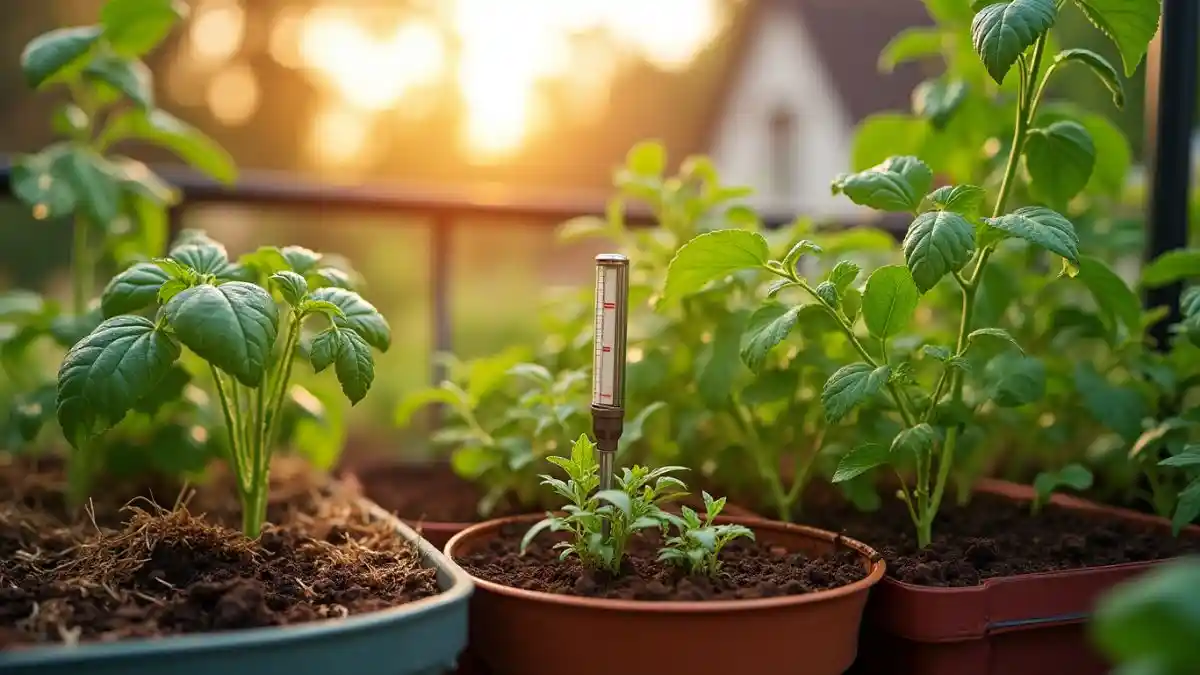
Consistent watering is crucial for container gardening.
- Drip Irrigation: Install a simple system for even moisture distribution. Drip systems are efficient and reduce water waste.
- Self-Watering Pots: These are great for busy gardeners, as they provide consistent moisture to plants.
- Watering Schedule: Water early in the morning to minimize evaporation. Monitor soil moisture daily, particularly during hot weather.
- Mulching: Apply a layer of mulch (e.g., straw or wood chips) to retain soil moisture and decrease watering frequency.
Pro Tip: Use a moisture meter to check soil hydration levels and avoid overwatering, which can lead to root rot.
6. Maximize Sunlight and Space
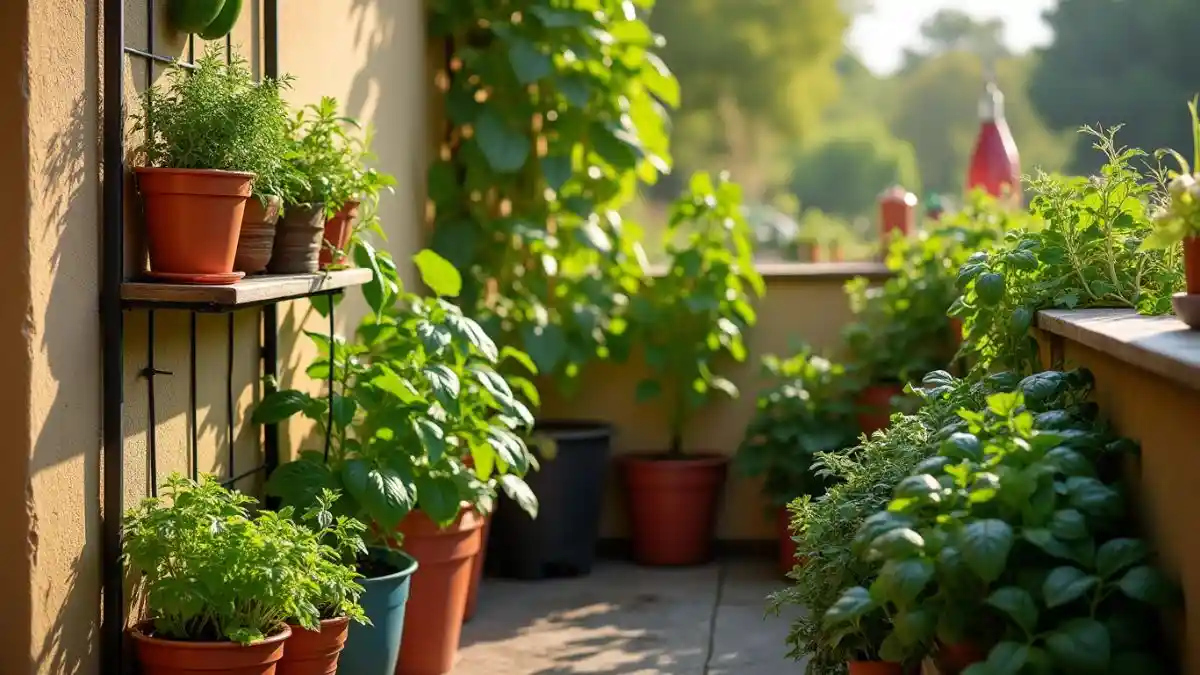
Make the most of your balcony’s sunlight and space.
- Position Plants Strategically: Place sun-loving plants like tomatoes and peppers where they’ll get the most light. Shade-tolerant plants like lettuce and spinach can go in shadier spots.
- Vertical Gardening: Use trellises, shelves, or hanging planters to grow upward. This is especially useful for climbing plants like beans, cucumbers, and peas.
- Reflective Surfaces: Use mirrors, white walls, or aluminum foil to increase light exposure for plants in shaded areas.
- Rotate Pots: Occasionally rotate pots to ensure even sunlight exposure and prevent plants from leaning toward the light.
Example: A trellis for climbing plants like beans or cucumbers saves floor space and adds visual interest.
7. Maintain and Harvest Regularly
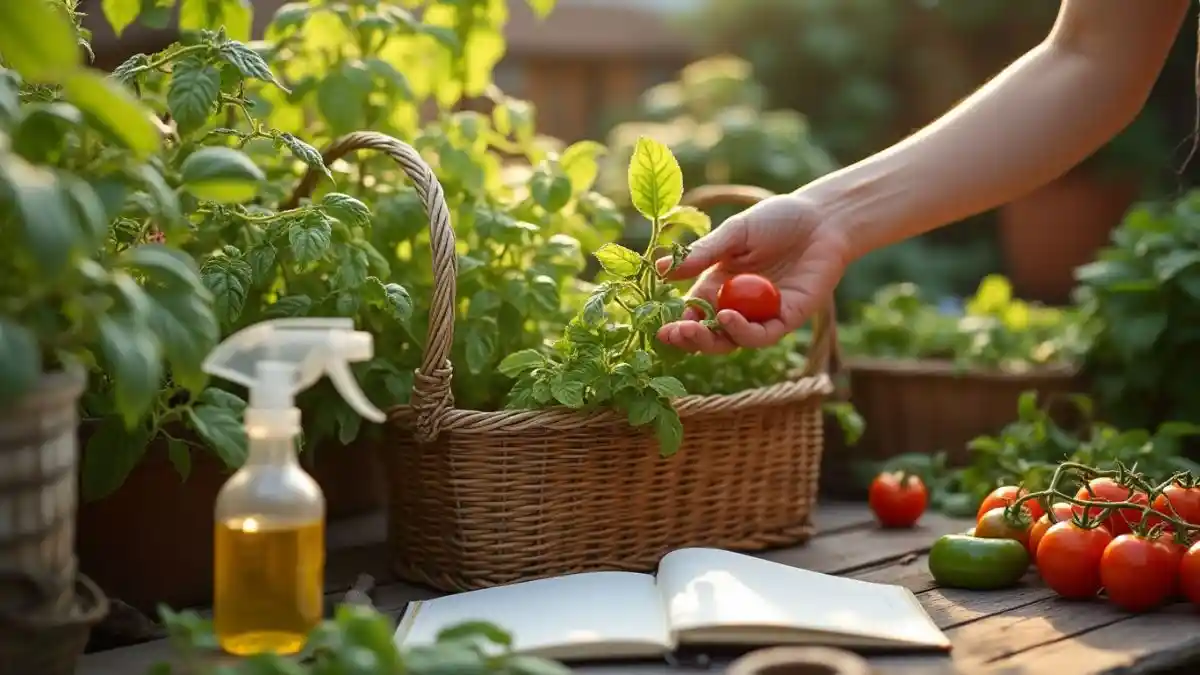
Regular care ensures a productive balcony vegetable garden.
- Prune Plants: Remove dead leaves and stems to encourage growth and improve air circulation. Pinch off suckers on tomato plants to direct energy toward fruit production.
- Harvest Often: Pick vegetables regularly to promote continuous production. For example, harvest lettuce leaves as they grow, and pick herbs frequently to keep them bushy.
- Monitor for Pests: Check plants frequently for signs of pests such as aphids or spider mites. Employ organic solutions like neem oil or insecticidal soap to address infestations.
- Fertilize Regularly: Replenish nutrients by adding compost or liquid fertilizer every 2-4 weeks, depending on the plant’s needs.
Pro Tip: Keep a gardening journal to track progress, note challenges, and learn from mistakes. This can help you refine your approach and improve your garden over time.
Tips for Success in Balcony Vegetable Gardening
- Start Small: Begin with a few plants and expand as you gain confidence. This prevents overwhelm and allows you to focus on learning.
- Companion Planting: Grow basil near tomatoes to improve flavor and repel pests. Marigolds can also deter pests and add color to your garden.
- Join Communities: Connect with other urban gardeners through online forums or local gardening clubs. They can offer valuable tips and inspiration.
Common Challenges and Solutions
- Limited Space: Use vertical gardening and compact plant varieties.
- Pests: Use organic solutions like neem oil or insecticidal soap.
- Weather Extremes: Provide shade cloth for hot summers and frost protection for cold winters.
Seasonal Guide for Balcony Vegetable Gardening
- Spring: Start cool-season crops like lettuce and spinach.
- Summer: Grow heat-loving plants like tomatoes and peppers.
- Fall: Plant quick-growing veggies like radishes and greens.
- Winter: Use season extenders like cloches or cold frames.
Frequently Asked Questions (FAQ)
What vegetables can I grow in a balcony vegetable garden?
You can grow lettuce, herbs, cherry tomatoes, peppers, and more. Choose compact varieties for small spaces.
How much sunlight do balcony vegetable gardens need?
Most vegetables need 4-6 hours of sunlight daily. South-facing balconies are ideal.
What containers are best for a balcony vegetable garden?
Use pots, planters, or grow bags with proper drainage. Fabric pots are light and simple to relocate.
How often should I water my balcony vegetable garden?
Water when the top inch of soil feels dry. Early morning is the optimal time to water.
Can I grow vegetables on a shaded balcony?
Yes, but choose shade-tolerant plants like lettuce, spinach, or herbs.
How do I prevent pests in my balcony vegetable garden?
Employ organic solutions like neem oil or insecticidal soap, and check plants frequently.
What soil should I use for a balcony vegetable garden?
Use well-draining potting mix enriched with compost. Avoid garden soil.
Can I grow vegetables year-round on my balcony?
In mild climates, yes. Use season extenders like cloches or cold frames in colder months.
How do I maximize space in a small balcony vegetable garden?
Use vertical gardening techniques like trellises, shelves, or hanging planters.
What are the simplest vegetables for beginners to cultivate?
Start with lettuce, herbs, cherry tomatoes, and peppers. They’re low-maintenance and productive.
Conclusion: Start Your Balcony Vegetable Garden Today
Creating a balcony vegetable garden is easier than you think. By following these 7 easy steps, you can transform your balcony into a productive, green oasis. Whether you’re cultivating herbs for your kitchen or tomatoes for your salads, the benefits are boundless.
Ready to get started? Pick up a few pots, some potting mix, and your favorite seeds, and begin your balcony gardening journey today. Your fresh, homegrown veggies are just a few steps away!


